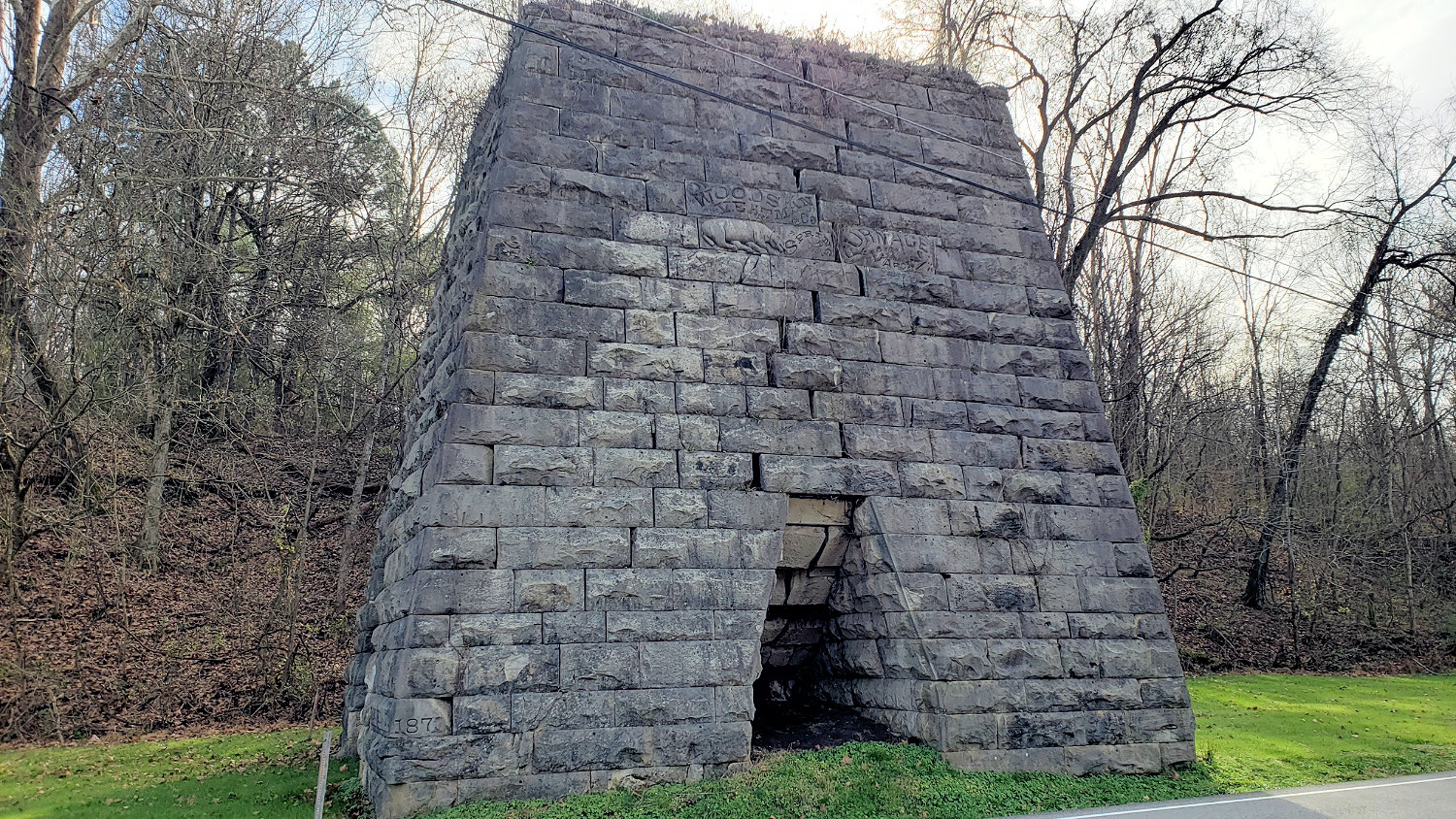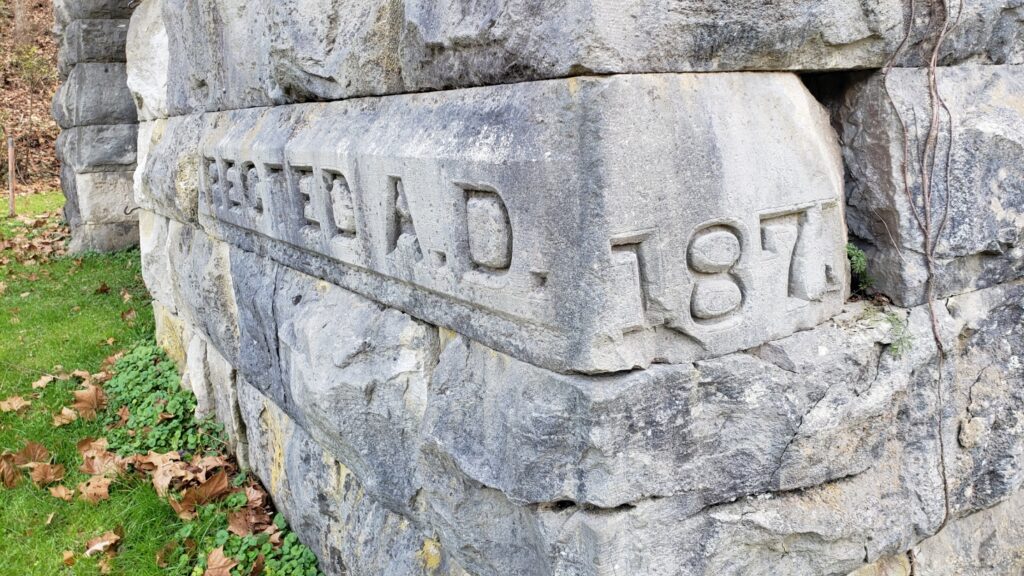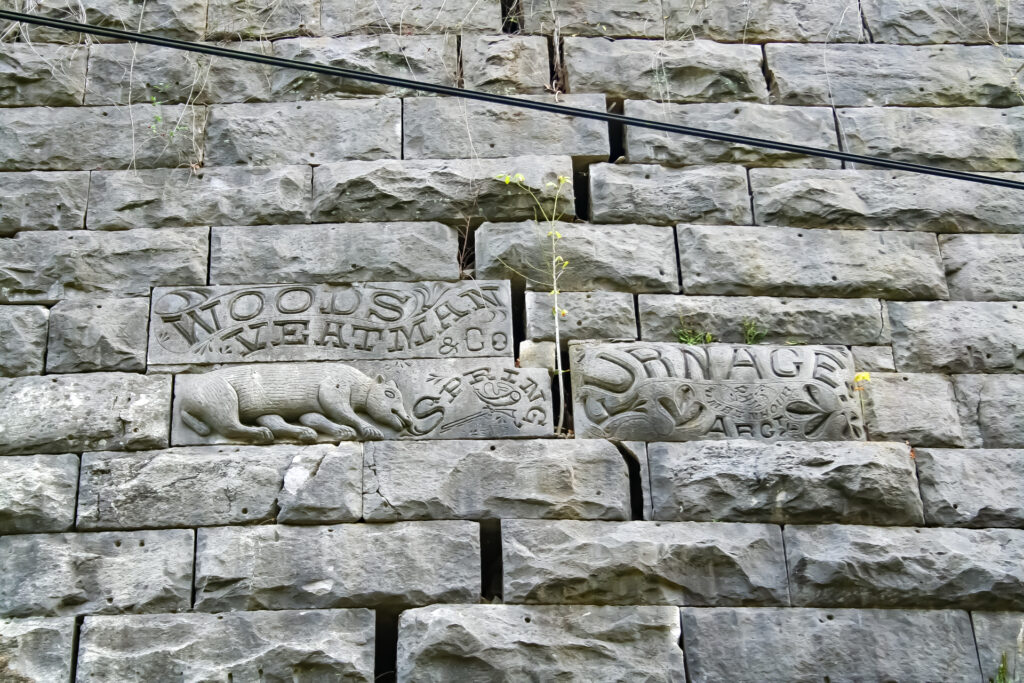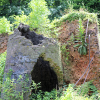Men from Nashville with a background in banking and merchandising found Stewart County, Tennessee to be rich in brown hematite and timber. Joseph Woods, Robert Woods and Thomas Yeatman formed a new company called Cumberland River Iron Works in hopes to becoming a major manufacturer of iron.
The men built the first furnace in Dover in 1828. Bear Spring’s furnace (not the one standing today) went up in 1830. The company would prosper at the expense of slave labor and extremely harsh working conditions for laborers up until the Civil War.
One of the ways the company could profit was the issuance of script instead of silver to their workers. These forms of payment were wooden tokens and could only be redeemed at the company’s commissary (or the company-owned store). There the wooden tokens were be exchanged for food and supplies. Not exactly a great way of getting paid.
The script payment was a devious way of keeping employees from leaving. It also prevented theft and widespread corruption. Workers who labored at furnaces were exposed to hazardous conditions on a continuous basis. The smoke alone would be enough to cause respiratory issues in no time.
By 1852, the company’s holdings included 51,000 acres of land and had a valuation of $1.28 million ($46 million in today’s dollars). They also owned 365 slaves. Slave labor was an integral part of the operation of the furnaces and allowed the company to be very profitable. A horrendous and dark time in our nation’s history, slaves were forced to work at the furnace or face the penalty of death.
In 1856, enslaved people began to organize an uprising across Stewart County. They were planning to overpower their owners (or “masters”), take their weapons and flee to Hopkinsville, Ky., and eventually to Ohio.
Rumors of the uprising spread to company and government leaders. In December 1856 a “Vigilant Committee” was formed at Dover. Slaves from all over Stewart County were arrested and carried before the committee. Under penalty of severe punishment or death, they had to confess to the planned revolt. Six leaders were hung by the committee a few days before Christmas and a large number were severely whipped.
With several hundred slaves owned by the furnace companies, Stewart County’s total slave population was significantly more. According to the 1860 US Census, 2,415 slaves lived in Stewart County, or about 24% of the total population.
During the Civil War, nearby Fort Donelson, a Confederate stronghold at Dover on the Cumberland River, fell to Union forces in February 1862. This opened the floodgates for the Union to advance deep into Tennessee. Along the way, the Union army destroyed any strategic facilities the Confederacy could use to aid their war. Gunboats fired into Bear Spring and destroyed the furnace and other iron works.
After the Civil War, Bear Spring Furnace was rebuilt in 1873, which a portion of it remains today. Without slave labor and increased competition, the iron-making business in Stewart County was marginally profitable. The company sold the Bear Spring furnace to Cumberland River Lands, Ltd. in 1890 for just $225,000. The new company leased out the furnace to White, Dixon and Company from 1890 to 1901.
One of the big milestones for Bear Spring was the coming of the railroad. Cumberland River Lands, Ltd. organized a new railroad company, the Tennessee and Cumberland River Railroad, to haul iron, timber, supplies and passengers. The 15-mile railroad spur went from Bear Spring to Tennessee Ridge and connected there with the L&N Railroad. The line went into business in 1898.
Despite excitement and promise of the railroad spur, business at Bear Spring and the local iron industry continued to be volatile. A series of ownership changes and lease agreements continued until the 1920s. The railroad was dismantled after just 23 years running and in 1927 the Bear Spring Furnace shut down for good. It is believed to be the last Cold Blast Charcoal furnace to operate in the US.
The following year, the furnace at Bear Spring, except for the stack itself, was razed with the materials hauled to Dover for repurposing. Today the remains of the furnace stack can be seen right along Tennessee 49 in the Bear Spring community. The highway from Bear Spring to Tennessee Ridge runs on top of the old railroad bed.
Location of Bear Spring Furnace
Resources
- The Clarksville Leaf-Chronicle – September 8, 1928
- The Clarksville Leaf-Chronicle – History of Cumberland River Irons Work Recalled – February 13, 1954
- The Clarksville Leaf-Chronicle – September 21, 1939
- The Clarksville Leaf-Chronicle – September 4, 1926
- US Census 1860








Pingback: Bear Spring, Tennessee - Four Rivers Explorer